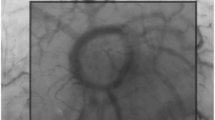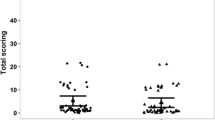Abstract
Green light with a wavelength of 520 nm is commonly used in sidestream dark field (SDF) video microscopes for sublingual microcirculation assessment in clinical practice. However, blue light could obtain a clearer microcirculatory image due to a higher light absorption coefficient of hemoglobin. The aim of this study was to compare the sublingual microcirculatory image quality acquisition and related microcirculatory parameters between 520 nm green light and 415 nm blue light probes in the SDF device named MicroSee V100. Sublingual microcirculation films from twenty-one healthy volunteers were prospectively collected by blue light and green light probes, and only one video of each wavelength was recorded and analyzed in each volunteer. Moreover, 200 sublingual microcirculation films (100 by blue light probe and 100 by green light probe) of ICU patients were retrospectively scored for microcirculation image quality. Compared to green light, an increase in the perfused vessel density (paired t test, increased by 4.6 ± 4.7 mm/mm2, P < 0.0001) and total vessel density (paired t test, increased by 5.1 ± 4.6 mm/mm2, P < 0.0001) was observed by blue light in the healthy volunteers. The blue light probe had a significantly lower rate of unacceptable films than the green light probe in the 200 films of ICU patients (10/100 vs. 39/100, P < 0.0001). Blue light provides a higher microcirculatory vessel density and image quality than the existing SDF probe using green light.

Similar content being viewed by others
References
De Backer D, Hollenberg S, Boerma C, et al. How to evaluate the microcirculation: report of a round table conference. Critical care 2007;11(5):R101. doi: https://doi.org/10.1186/cc6118 [published Online First: 2007/09/12].
He H, Liu D, Ince C. Colloids and the Microcirculation. Anesth Analg. 2018;126(5):1747–54. doi:https://doi.org/10.1213/ANE.0000000000002620.
He H, Gruartmoner G, Ince Y, et al. Effect of pneumoperitoneum and steep reverse-Trendelenburg position on mean systemic filling pressure, venous return, and microcirculation during esophagectomy. J Thorac disease. 2018;10(6):3399–408. doi:https://doi.org/10.21037/jtd.2018.05.169.
Ince C. Hemodynamic coherence and the rationale for monitoring the microcirculation. Crit Care. 2015;19(Suppl 3):8. doi:https://doi.org/10.1186/cc14726 [published Online First: 2016/01/06]. Suppl 3 ) .
He HW, Long Y, Liu DW, et al. Resuscitation incoherence and dynamic circulation-perfusion coupling in circulatory shock. Chin Med J. 2019;132(10):1218–27. doi:https://doi.org/10.1097/CM9.0000000000000221 [published Online First: 2019/03/22].
Groner W, Winkelman JW, Harris AG, et al. Orthogonal polarization spectral imaging: a new method for study of the microcirculation. Nat Med. 1999;5(10):1209–12. doi:https://doi.org/10.1038/13529 [published Online First: 1999/09/30].
Gilbert-Kawai E, Coppel J, Bountziouka V, et al. A comparison of the quality of image acquisition between the incident dark field and sidestream dark field video-microscopes. BMC Med Imaging. 2016;16:10. doi:https://doi.org/10.1186/s12880-015-0078-8 [published Online First: 2016/01/23].
Aykut G, Veenstra G, Scorcella C, et al. Cytocam-IDF (incident dark field illumination) imaging for bedside monitoring of the microcirculation. Intensive care medicine experimental. 2015;3(1):40. doi:https://doi.org/10.1186/s40635-015-0040-7 [published Online First: 2015/07/29].
van Elteren HA, Ince C, Tibboel D, et al. Cutaneous microcirculation in preterm neonates: comparison between sidestream dark field (SDF) and incident dark field (IDF) imaging. J Clin Monit Comput. 2015;29(5):543–8. doi:https://doi.org/10.1007/s10877-015-9708-5 [published Online First: 2015/05/30].
Ince C, Boerma EC, Cecconi M, et al. Second consensus on the assessment of sublingual microcirculation in critically ill patients: results from a task force of the European Society of Intensive Care Medicine. Intensive Care Med. 2018;44(3):281–99. doi:https://doi.org/10.1007/s00134-018-5070-7 [published Online First: 2018/02/08].
Goedhart PT, Khalilzada M, Bezemer R, et al. Sidestream Dark Field (SDF) imaging: a novel stroboscopic LED ring-based imaging modality for clinical assessment of the microcirculation. Opt Express. 2007;15(23):15101–14. doi:https://doi.org/10.1364/oe.15.015101 [published Online First: 2007/11/12].
Li Z, Kaneko S, Oda ea S. Microcirculation imaging with multicolor LEDs and mini CCD camera. World Congress on Medical Physics and Biomedical Engineering, IFMBE Proceedings 2013:1006-09. doi: https://doi.org/10.1007/978-3-642-29305-4_264.
Bosschaart N, Edelman GJ, Aalders MC, et al. A literature review and novel theoretical approach on the optical properties of whole blood. Lasers Med Sci. 2014;29(2):453–79. doi:https://doi.org/10.1007/s10103-013-1446-7 [published Online First: 2013/10/15].
Hashimoto R, Kurata T, Sekine M, et al. Two-wavelength oximetry of tissue microcirculation based on sidestream dark-field imaging. J Biomed Opt. 2018;24(3):1–8. doi:https://doi.org/10.1117/1.Jbo.24.3.031013 [published Online First: 2018/11/01].
Jiang S, Li P, Shen Y, et al. An adaptive fractal model for sublingual microcirculation. Microvasc Res. 2021;134:104101. https://doi.org/10.1016/j.mvr.2020.104101 [published Online First: 2020/11/10].
Guay CS, Khebir M, Shiva Shahiri T, et al. Evaluation of automated microvascular flow analysis software AVA 4: a validation study. Intensive care medicine experimental. 2021;9(1):15. doi:https://doi.org/10.1186/s40635-021-00380-0 [published Online First: 2021/04/03].
Massey MJ, Larochelle E, Najarro G, et al. The microcirculation image quality score: development and preliminary evaluation of a proposed approach to grading quality of image acquisition for bedside videomicroscopy. J Crit Care. 2013;28(6):913–7. doi:https://doi.org/10.1016/j.jcrc.2013.06.015 [published Online First: 2013/08/27].
Coppel J, Bountziouka V, Martin D, et al. A comparison of the quality of image acquisition between two different sidestream dark field video-microscopes. J Clin Monit Comput. 2021;35(3):577–83. doi:https://doi.org/10.1007/s10877-020-00514-x [published Online First: 2020/05/07].
Hilty MP, Akin S, Boerma C, et al. Automated Algorithm Analysis of Sublingual Microcirculation in an International Multicentral Database Identifies Alterations Associated With Disease and Mechanism of Resuscitation. Crit Care Med. 2020;48(10):e864-e75. doi:https://doi.org/10.1097/ccm.0000000000004491 [published Online First: 2020/09/16].
Hilty MP, Guerci P, Ince Y, et al. MicroTools enables automated quantification of capillary density and red blood cell velocity in handheld vital microscopy. Commun biology. 2019;2:217. doi:https://doi.org/10.1038/s42003-019-0473-8 [published Online First: 2019/06/27].
Gu YM, Wang S, Zhang L, et al. Characteristics and determinants of the sublingual microcirculation in populations of different ethnicity. Hypertension (Dallas, Tex: 1979) 2015;65(5):993–1001. doi: https://doi.org/10.1161/hypertensionaha.114.05119 [published Online First: 2015/02/26].
Acknowledgements
This work was supported by Peking Union Medical College Hospital of Medical Novel Medical Technology Project (No. XJS20190210), Excellence Program of Key Clinical Specialty of Critical Care Medicine in Beijing.
Author information
Authors and Affiliations
Corresponding author
Ethics declarations
Declarations
Dr. Ince is the CSO of Active Medical BV, Leiden The Netherlands, a company that provides education, services, hardware and software related to clinical microcirculation. There are no financial disclosures for other authors.
Additional information
Publisher’s Note
Springer Nature remains neutral with regard to jurisdictional claims in published maps and institutional affiliations.
Rights and permissions
About this article
Cite this article
Liu, B., He, H., Feng, X. et al. Sublingual microcirculation: comparison between the 415 nm blue light and 520 nm green light of sidestream dark field videomicroscopes. J Clin Monit Comput 37, 297–302 (2023). https://doi.org/10.1007/s10877-022-00891-5
Received:
Accepted:
Published:
Issue Date:
DOI: https://doi.org/10.1007/s10877-022-00891-5




